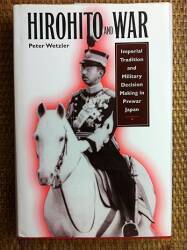
Peace Memorial Park
To the Peace Memorial Park
The U.S. dropped a nuclear bomb on Hiroshima, Japan,
on August 6, 1945.
Japan refused to respond to Allied communications,
and the U.S. dropped a second bomb on Nagasaki
three days later.
Six days after that, on August 15,
Japan finally surrendered.
Cryptanalysis and the Atomic Bombs
The Allies were reading Japan's military and
diplomatic communications.
The country's leadership planned a suicidal
defense of the Home Islands that they
estimated would lead to 20 million
Japanese deaths.
And, they expected Japan's eventual defeat to be
followed by a famine that would kill
another 10 million.
Japan's military leadership was just fine with that
plan, as was the Emperor.
A projected 30 million dead, to protect the Emperor.
The Allies knew all this through the decrypted
military and Foreign Ministry traffic.
But it was kept secret for about 50 years, to
protect the cryptanalysis secrets.
The Hiroshima and Nagasaki bombs were awful,
and racism certainly made them much more acceptable
to the Allies.
But one overnight incendiary bombing raid on
Tōkyō on 9-10 March 1945
killed almost as many people,
with a higher percentage of civilian deaths,
and destroyed a significantly larger area
than both nuclear bombs combined.
And, the Allies' planned invasion would have
devastated the entire nation and people of Japan.
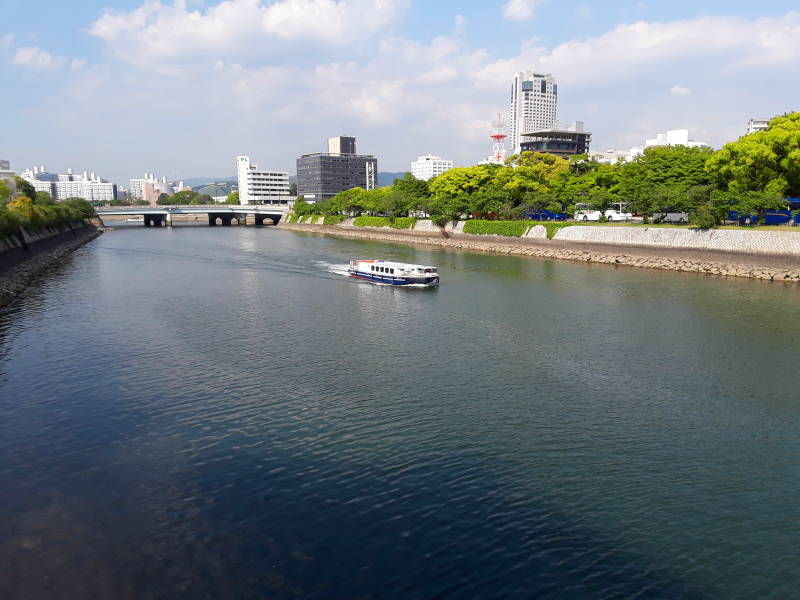
I'm walking from where I stayed at the J-Hoppers hostel to the Peace Memorial Park. The city is built on a delta in the Ōta River. We're looking upstream. The bomb aiming point was where the Aioi Bridge crosses near the tip of the island on our right.
The main building is a museum and conference center.
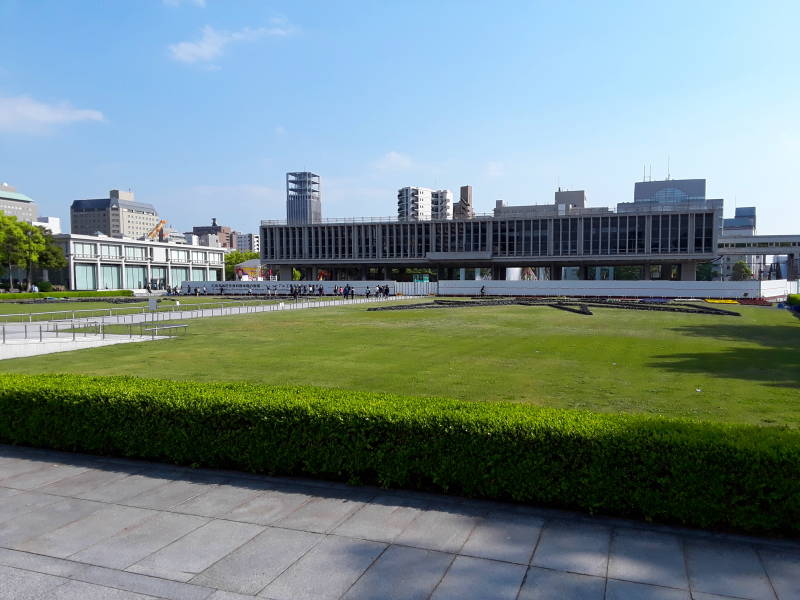
Japan was terrified that the Emperor would be tried for war crimes. The German leadership, at least those who hadn't committed suicide or fled to South America, had already been arrested and were scheduled to be tried.
The identify and existence of the nation of Japan was embodied in the Emperor. He was the direct descendant of the sun goddess Amaterasu and her brother the storm god Susano-o. They had created the universe.
Amaterasu had given the Sacred Mirror, the Sacred Jewel, and the Sacred Sword, Japan's Imperial Regalia, to her grandson Ninigi. He then gave them to his great-grandson, Jimmu, who became the first Emperor of Japan.
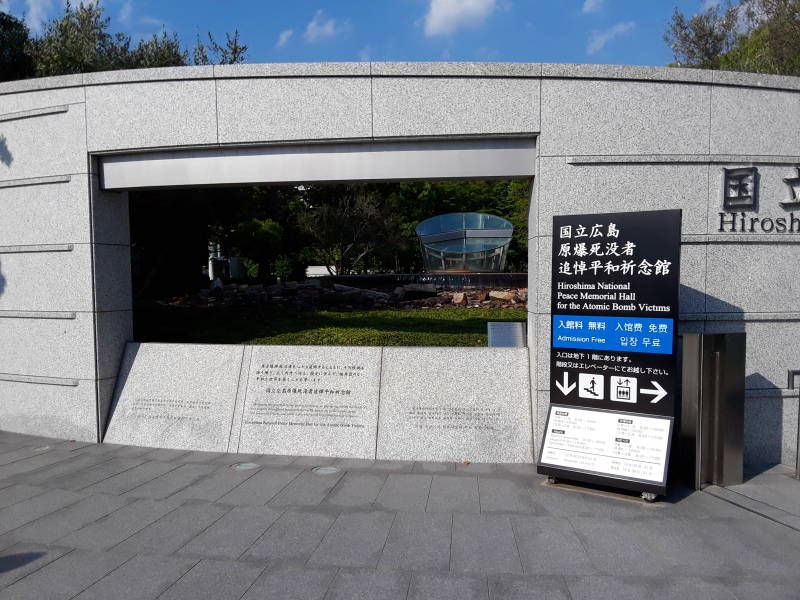
The current Emperor, Hirohito, like all Emperors before and after him, was believed to be an Akitsumikami, a deity in human form.
If the Allies executed him, it would bring about the end of Japan, and with it, the Universe.
So, within a month of the Hiroshima bombing, Japan was pushing the narrative that the nuclear bombings were war crimes, atrocities, to trade those against the many war crimes of which Japan had been accused.
To keep their cryptanalytic successes secret, the Allies went along with Japan's claims that the bombings had been unnecessary.
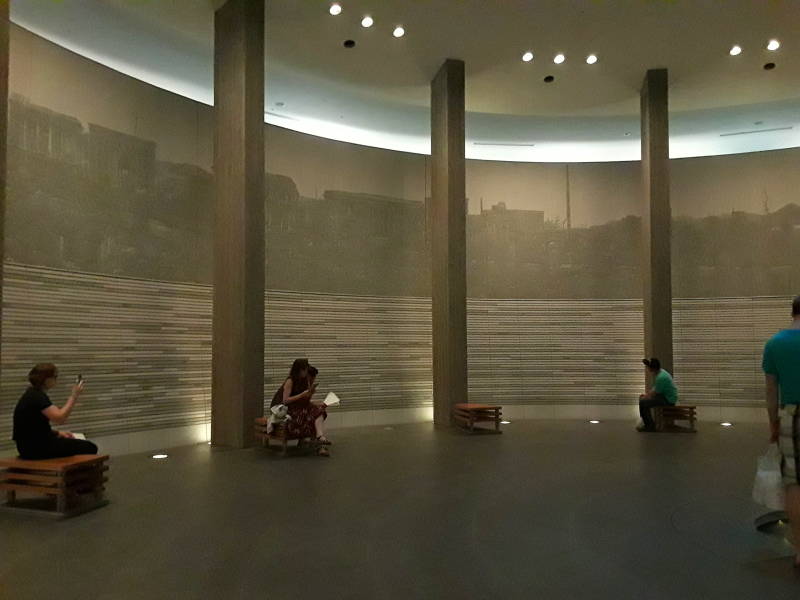
Memorial Cenotaph, Peace Pond, and Peace Flame
The Memorial Cenotaph provides a view down the Pond of Peace, over the Peace Flame, to the A-Bomb Dome.
The cenotaph holds the names of all the people killed by the bomb. It was the first memorial built here, in 1952. The epitaph says "Please rest in peace for [we/they] shall not repeat the error."

The subject is omitted, as polite Japanese speech usually requires lexical ambiguity. This was intended to memorialize the victims without politicizing the memorial. A plaque in English uses the word "we", explaining that the intent is to refer to all humanity, not just the Japanese or the Americans, and "the error" refers to the evil of war.
Right-wing groups in Japan have interpreted the epitaph as an admission of guilt by Japan, and they have vandalized the cenotaph.
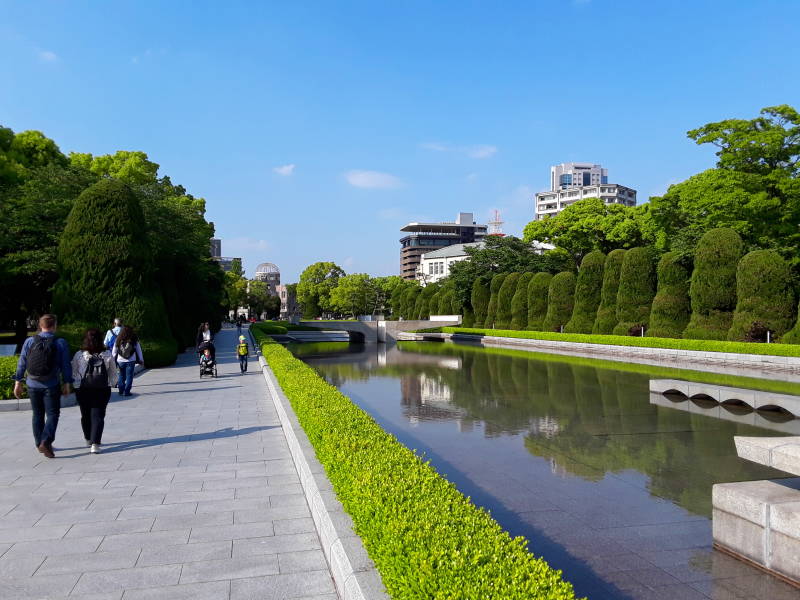
The Peace Flame was added in 1964. Its intent is to remain lit until all nuclear warheads have been destroyed.
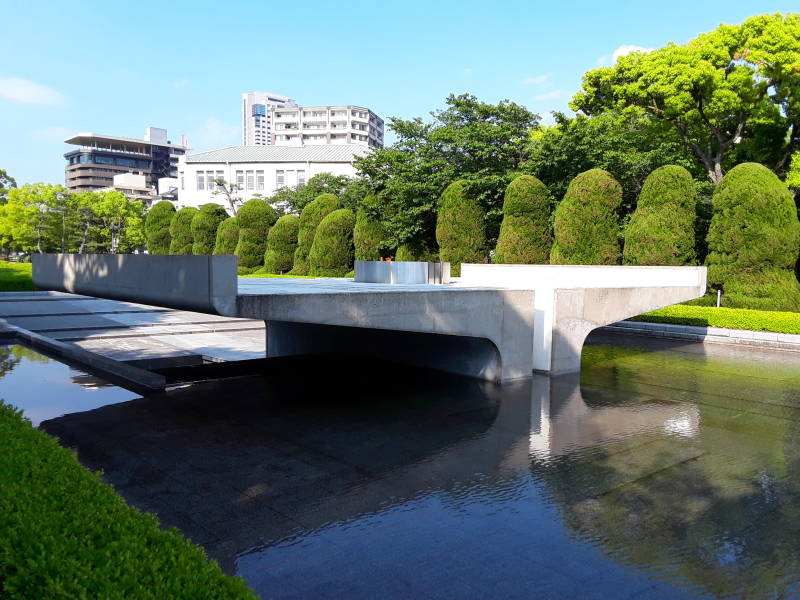
Children's Peace Monument
The Children's Peace Monument commemorates the young victims. There were 8,387 students who were in Hiroshima at the time of the bombing because they had been mobilized into military support operations, doing factory work, sewing, or working in food production. 6,907 of them were killed in the bombing.

Memorial Mound
The Memorial Mound contains ashes of 70,000 unidentified victims.

It's a form of a stupa, a Buddhist memorial.
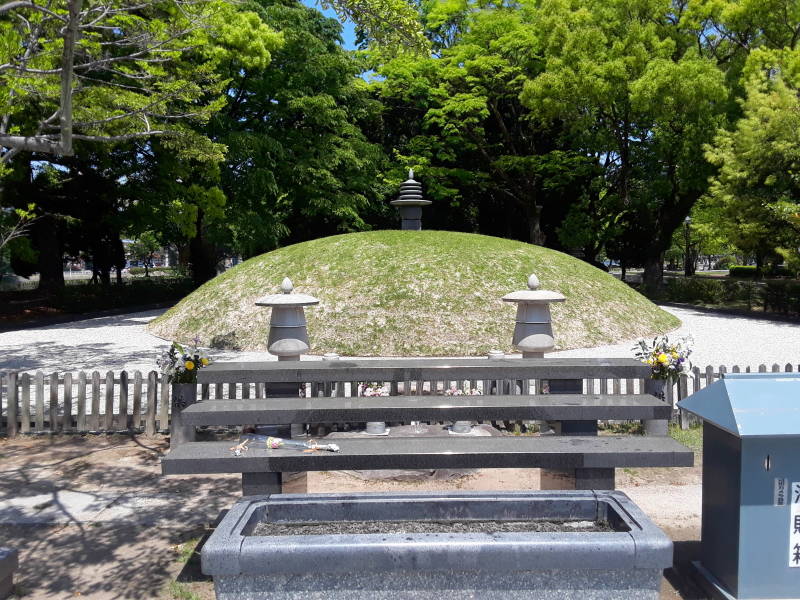
Cenotaph for Korean Victims
In 1939 the Japanese government introduced its National Mobilization Law and began conscripting Koreans to make up for the labor shortages due to the war.
5,400,000 Korean citizens were forced to work for Japan, and about 670,000 were taken to Japan and forced to work in factories and in mines. About 60,000 are estimated to have died in Japan between 1939 and 1945. At least 45,000 out of the 60,000 died in Hiroshima, but only 5,000 to 8,000 of those were killed in the nuclear bombing.
The Cenotaph for Korean Victims honors the Korean people killed in the bombing. After the war, 300,000 survivors of Hiroshima and Nagasaki returned to Korea. This marker reads "Souls of the dead ride to heaven on the backs of turtles."
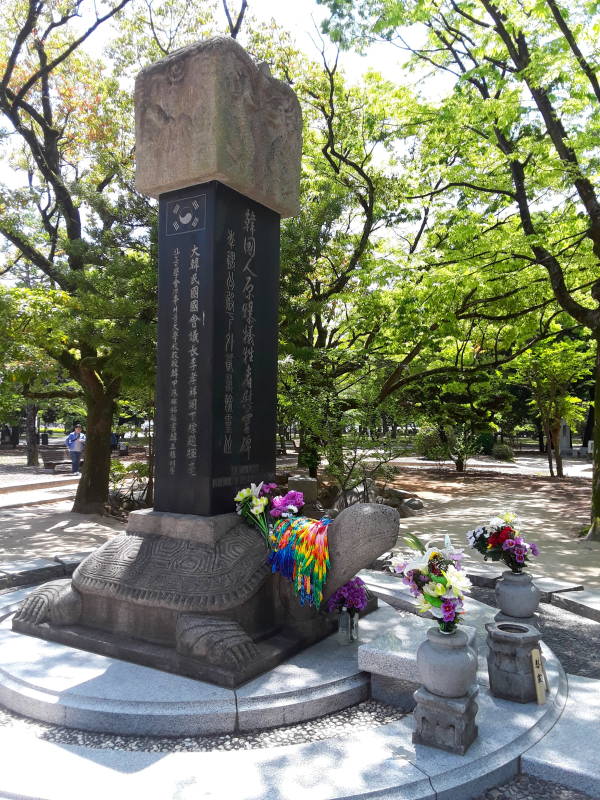
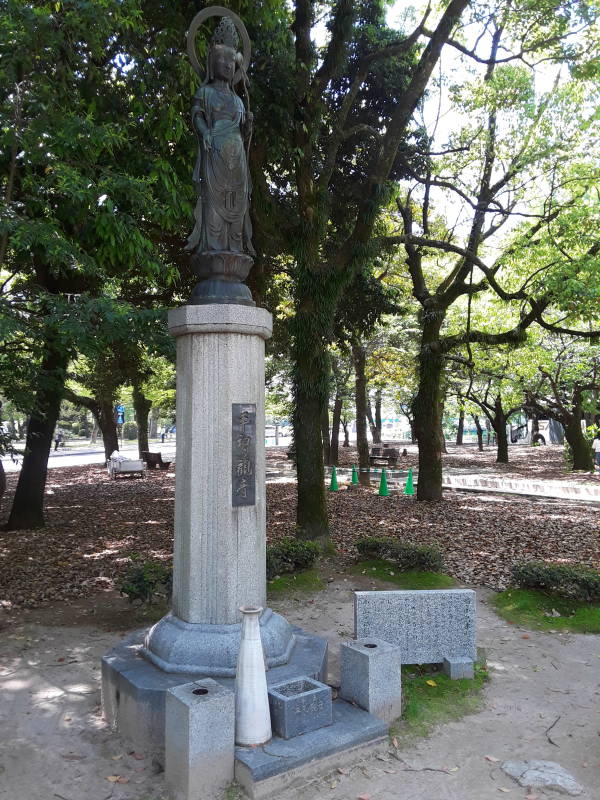
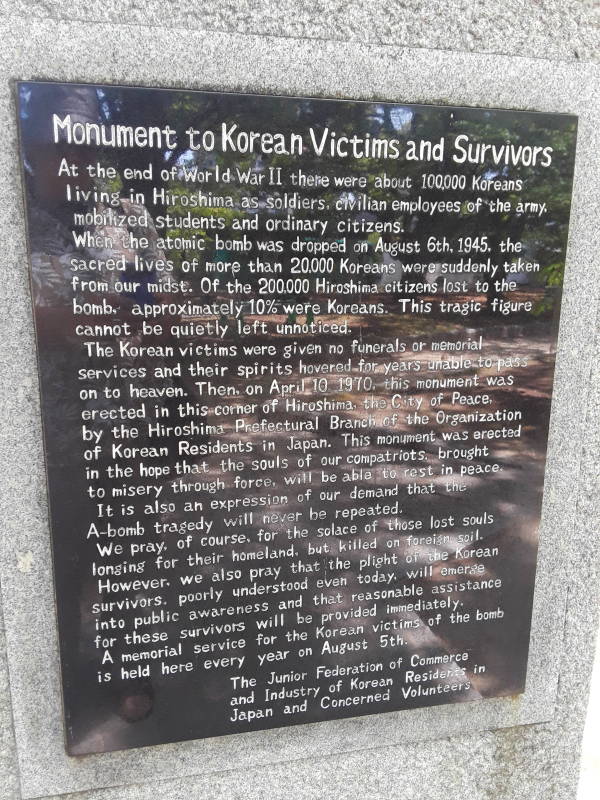
Hypocenter and the Atomic Bomb Dome
The Aioi Bridge was the bombing target. It had a distinctive T shape, spanning the river right above where it split around this island. That would make it easier to spot.

A cross wind drifted the bomb about 240 meters to the south-east. The hypocenter, the point directly below the explosion, was just out of this picture to the right.
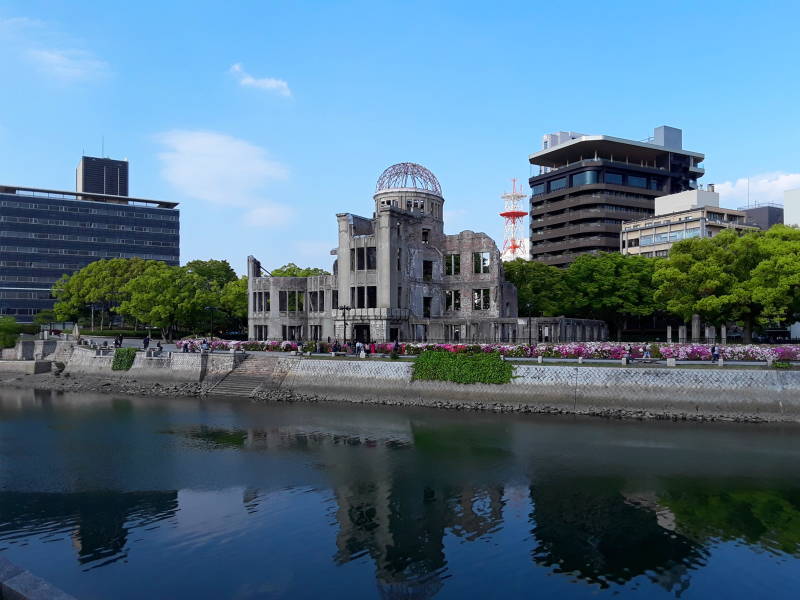
This ruined domed building was only about 150 meters from the hypocenter. With the bomb exploding at an altitude of about 600 meters, the blast on this building was close to straight down. Its roofs and interior were destroyed, but its walls stood.
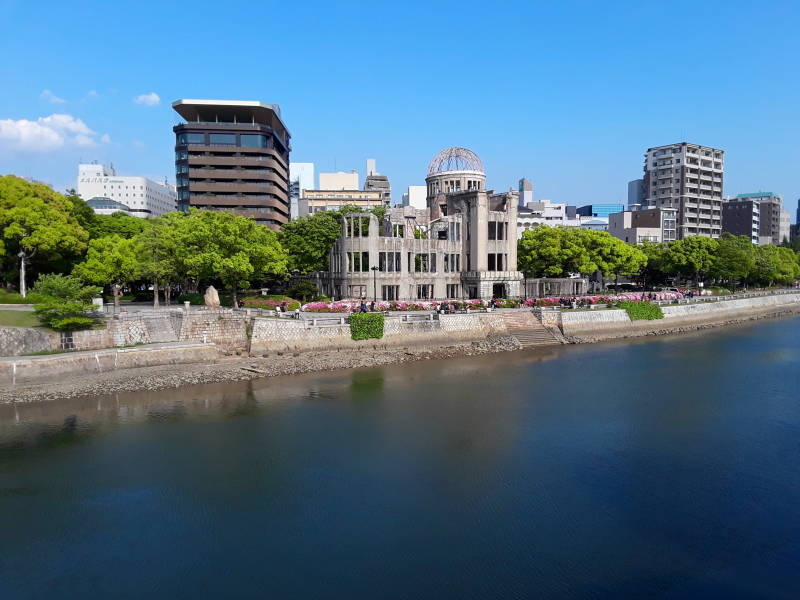
This was the Hiroshima Prefectural Industrial Promotional Hall. It was built in 1915.
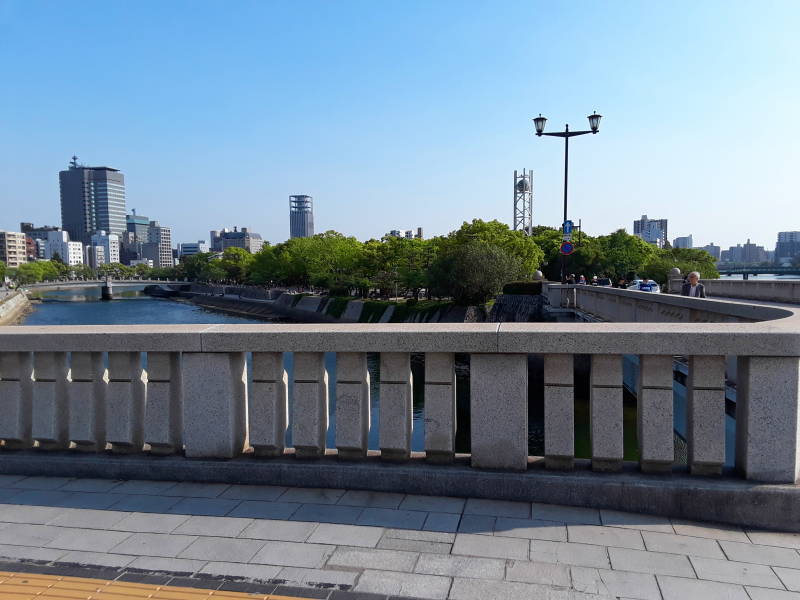
This was the only thing left standing near the hypocenter. In 1966 the Hiroshima City Council decided to indefinitely preserve the structure.
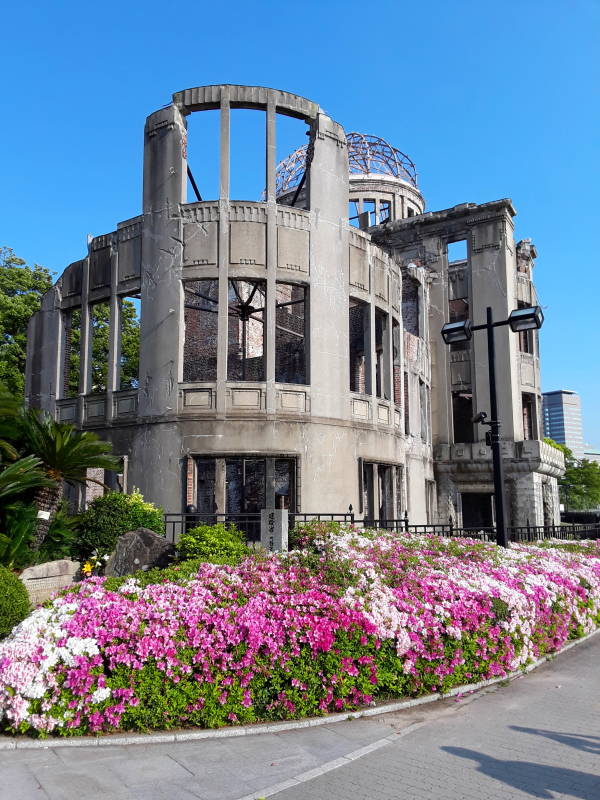
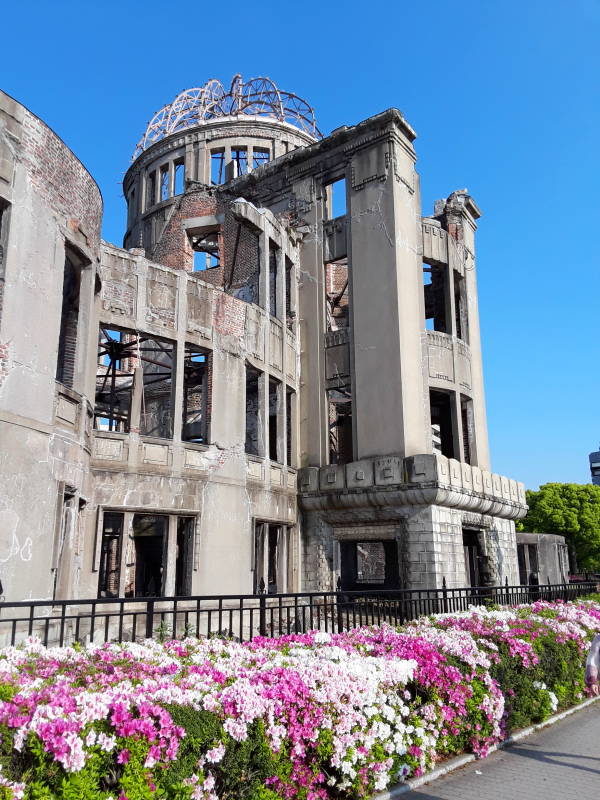
Preservation work has kept it standing. Supports are added inside the structure, to preserve its appearance.
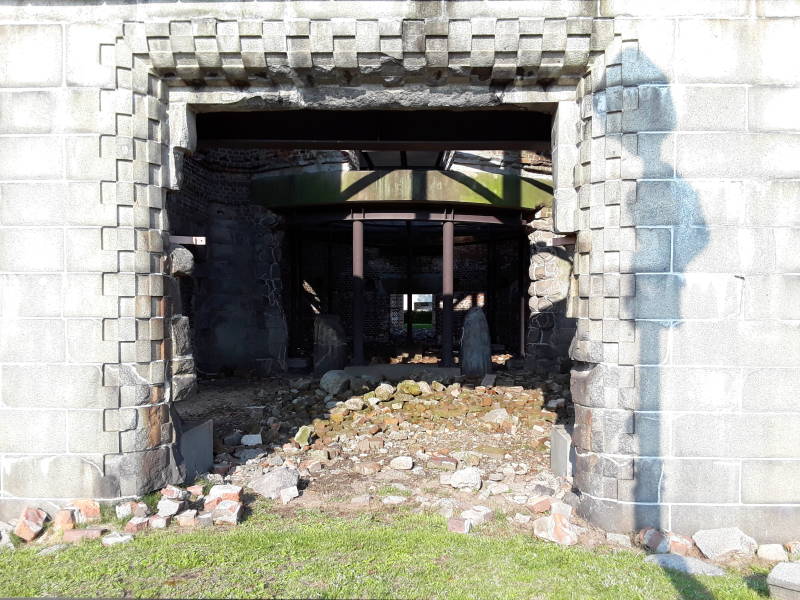
The government of Japan funded a large public relations effort to portray the bombings as U.S. atrocities, spending heavily through the 1980s.
It was successful. Many foreign visitors come to Hiroshima just to visit the Peace Memorial Park.

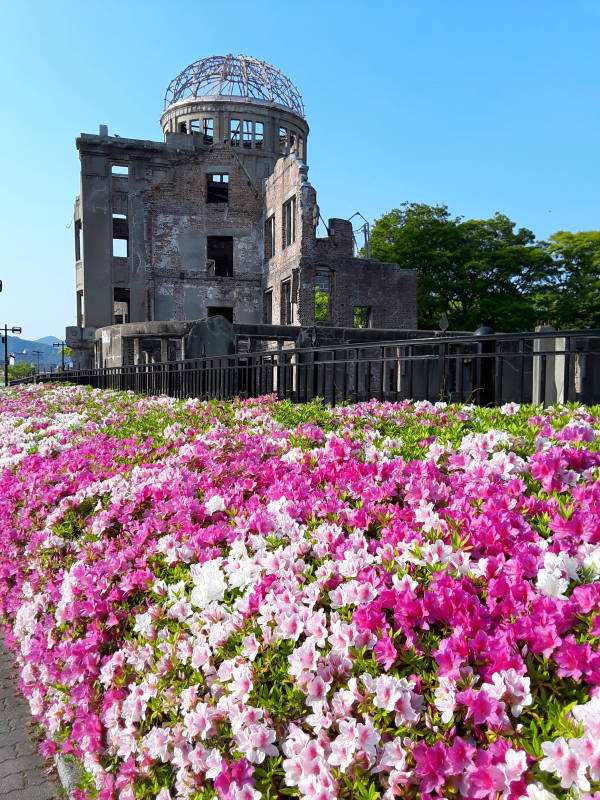
I found that the analogous peace memorial park in Nagasaki provides a much more historically accurate and balanced experience. But not nearly as many foreign visitors make it all the way down to the southwest end of the four largest Home Islands.
The above is specific to Hiroshima. Or maybe you want to explore other places in Japan.
